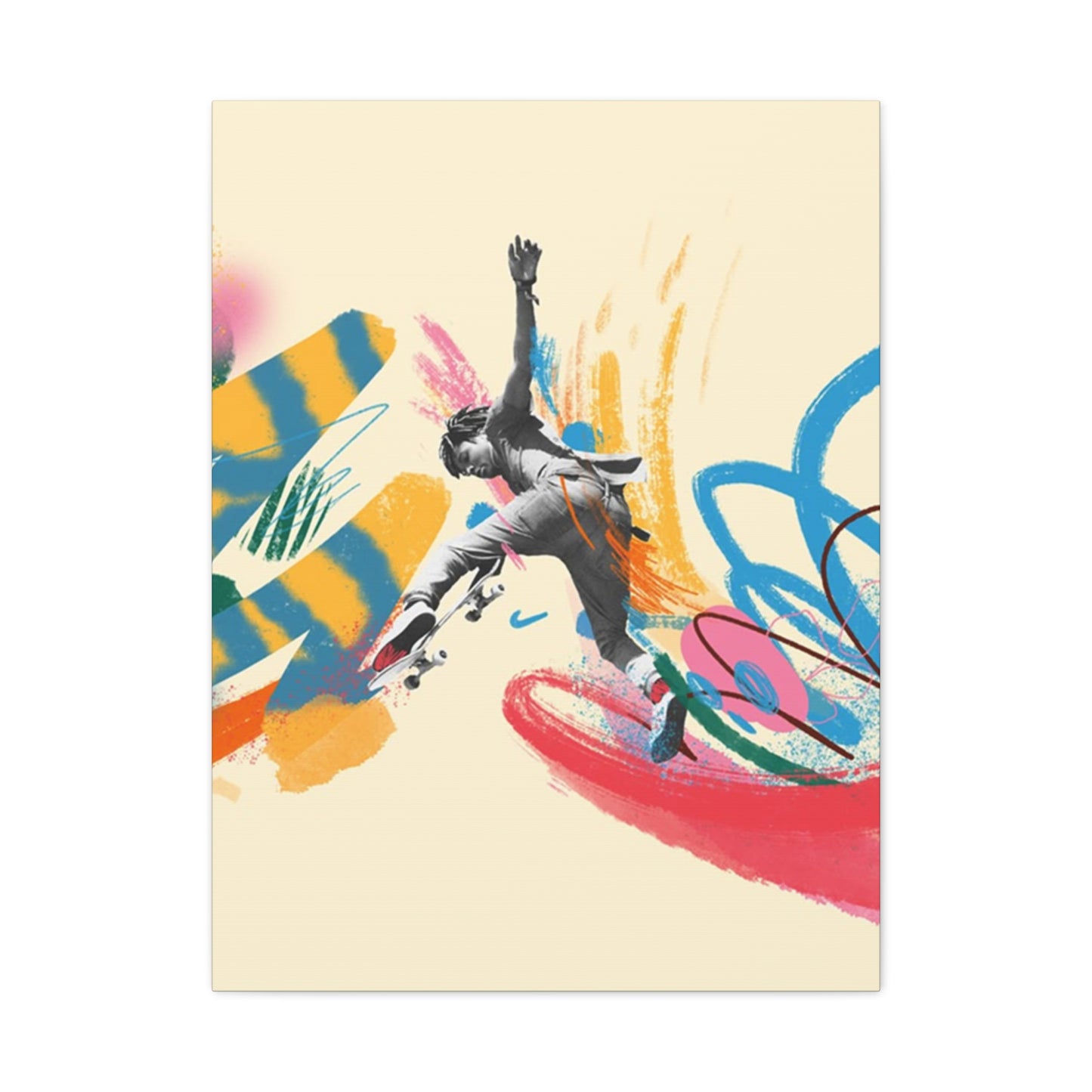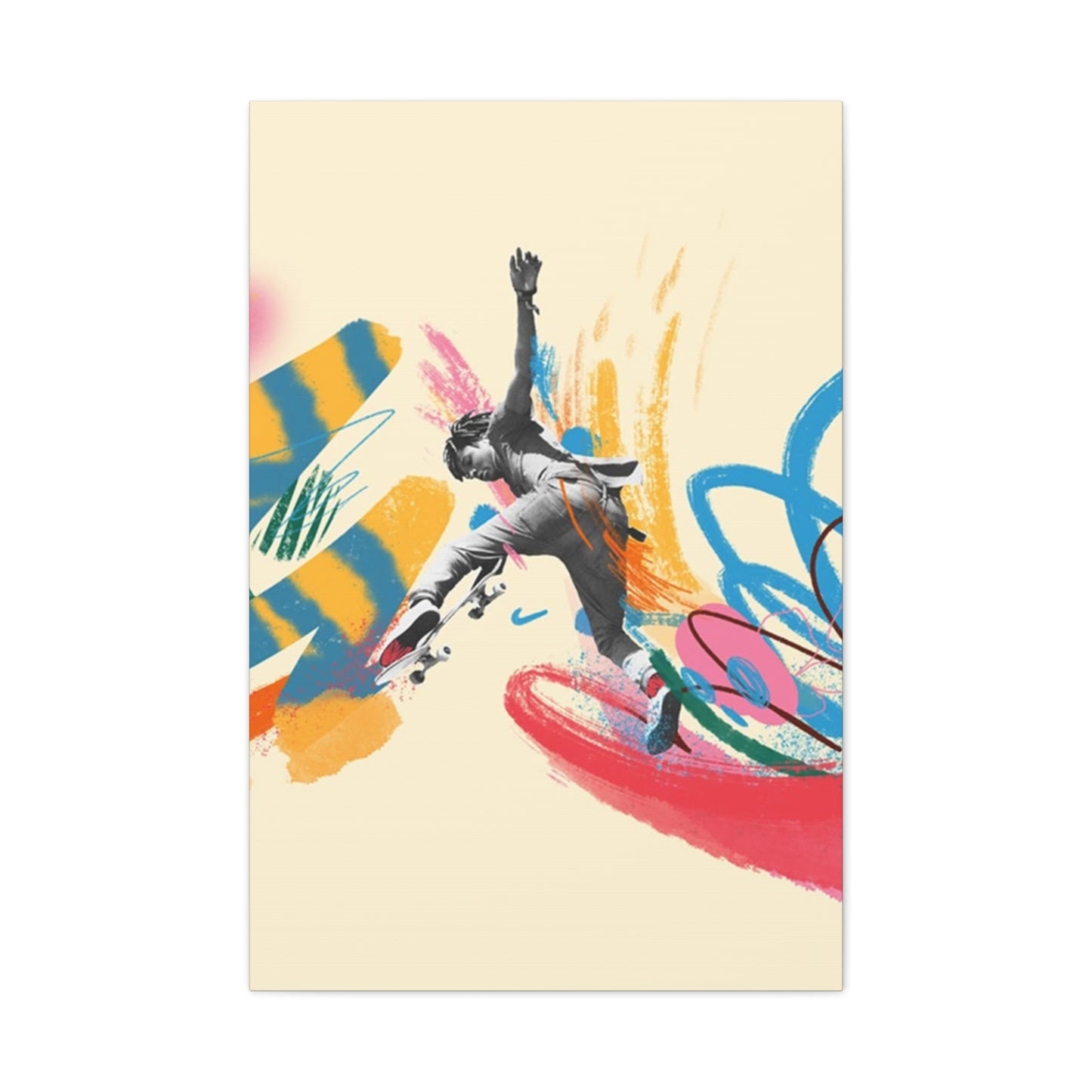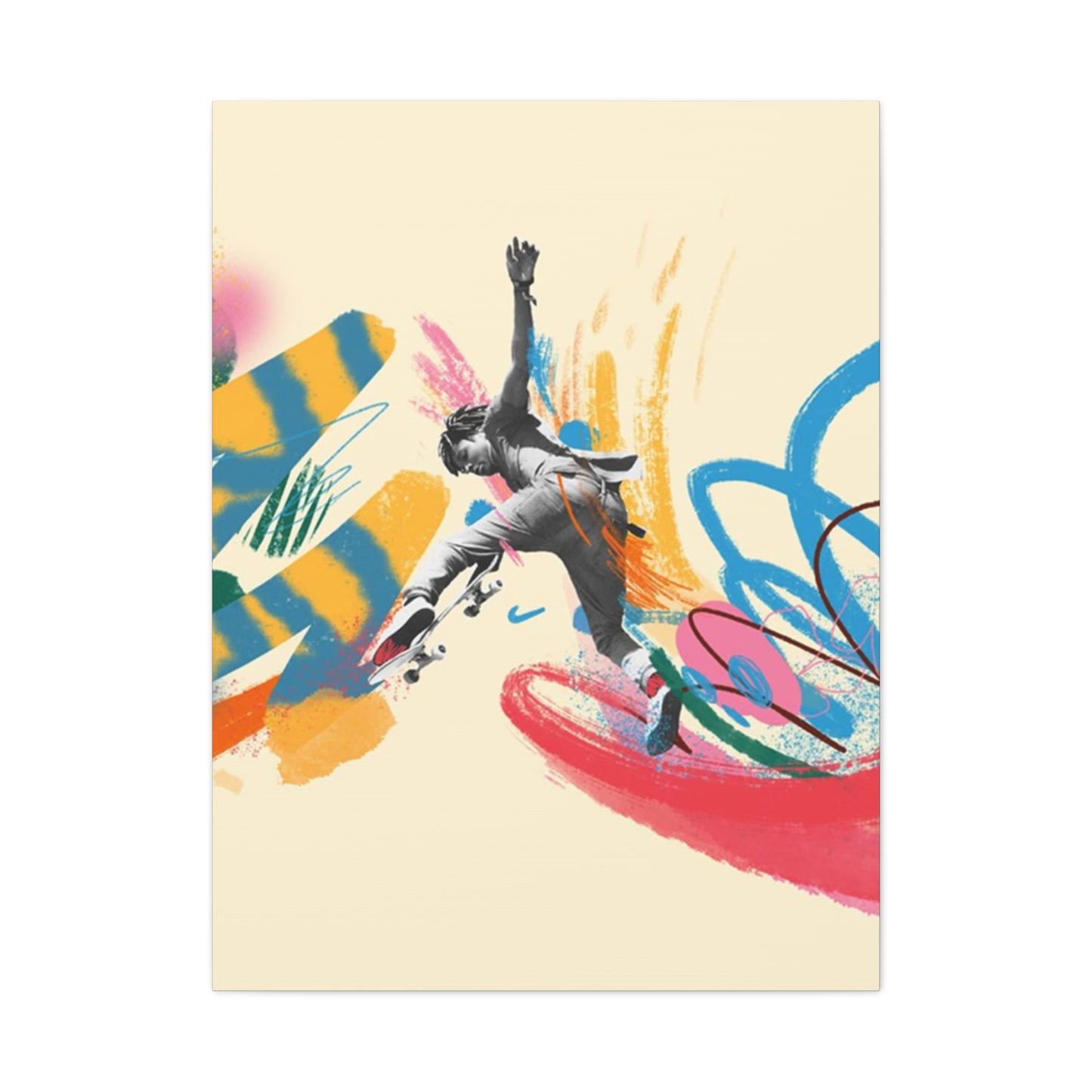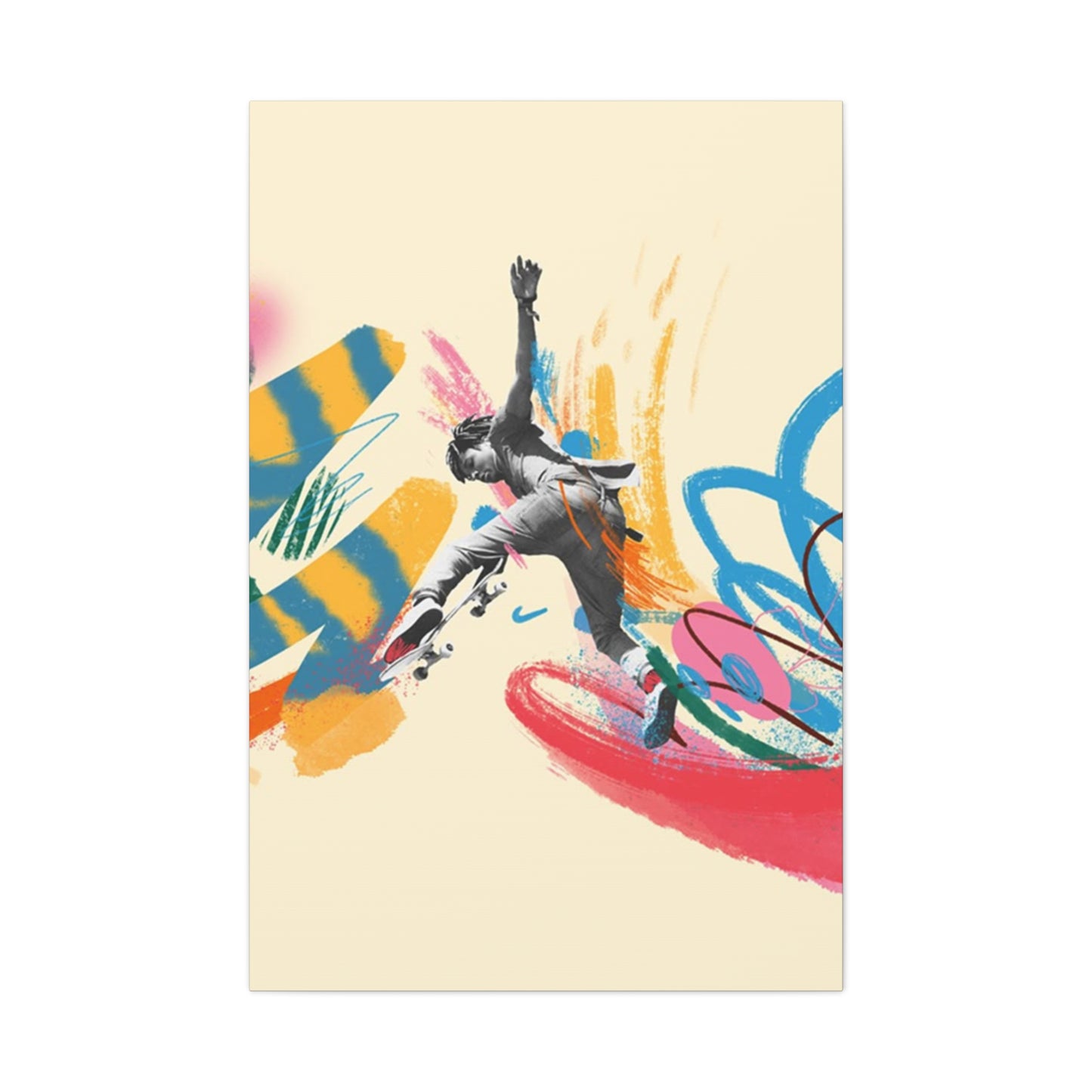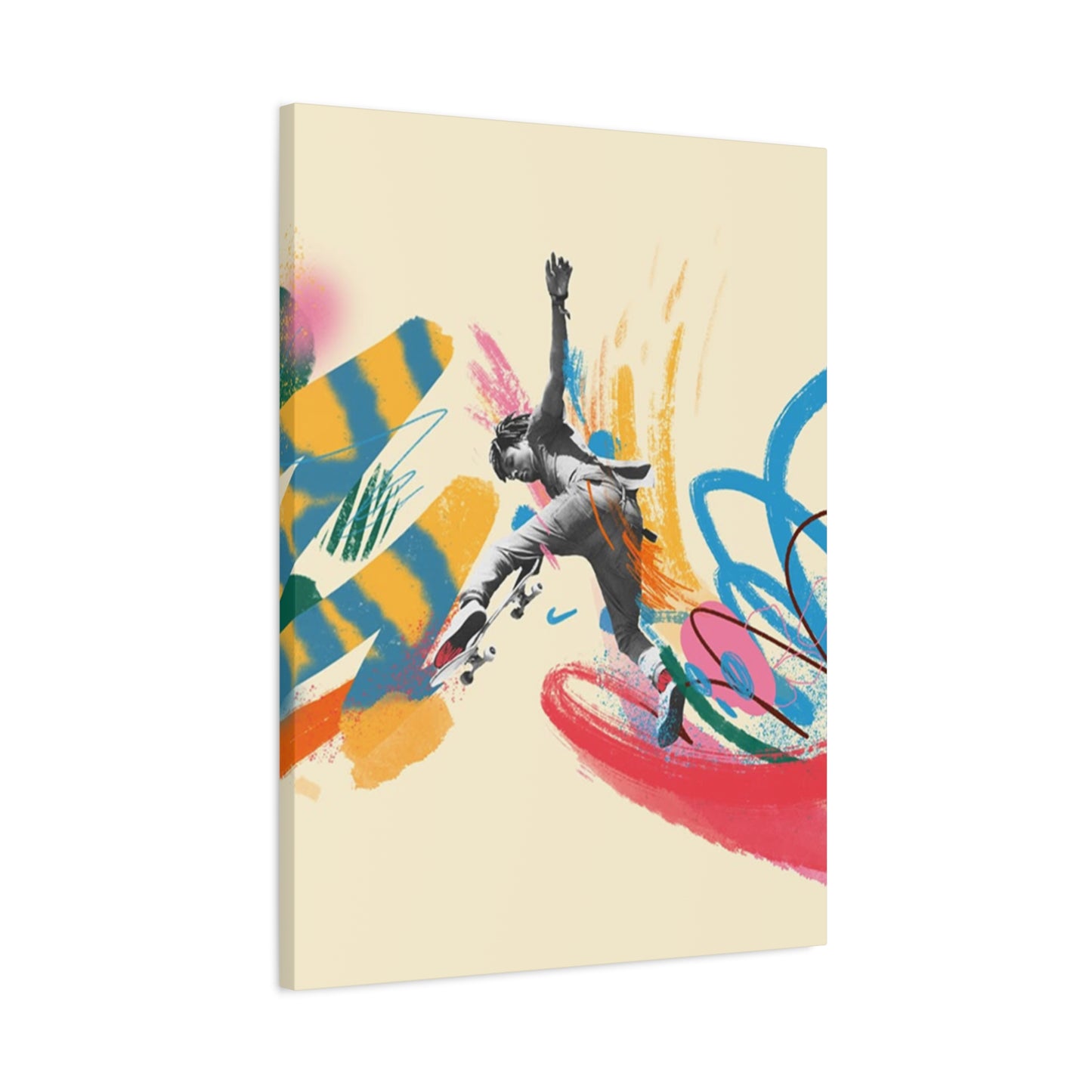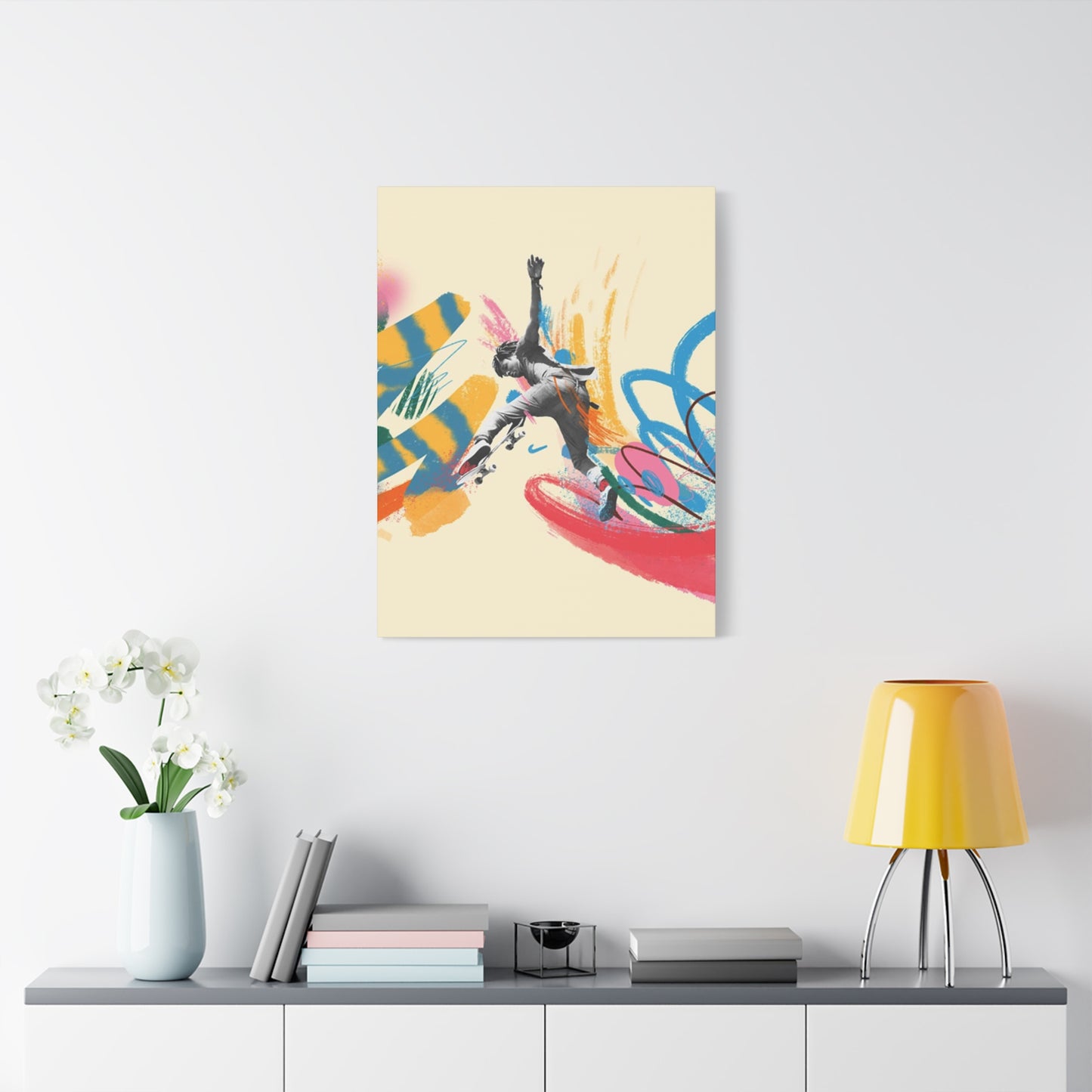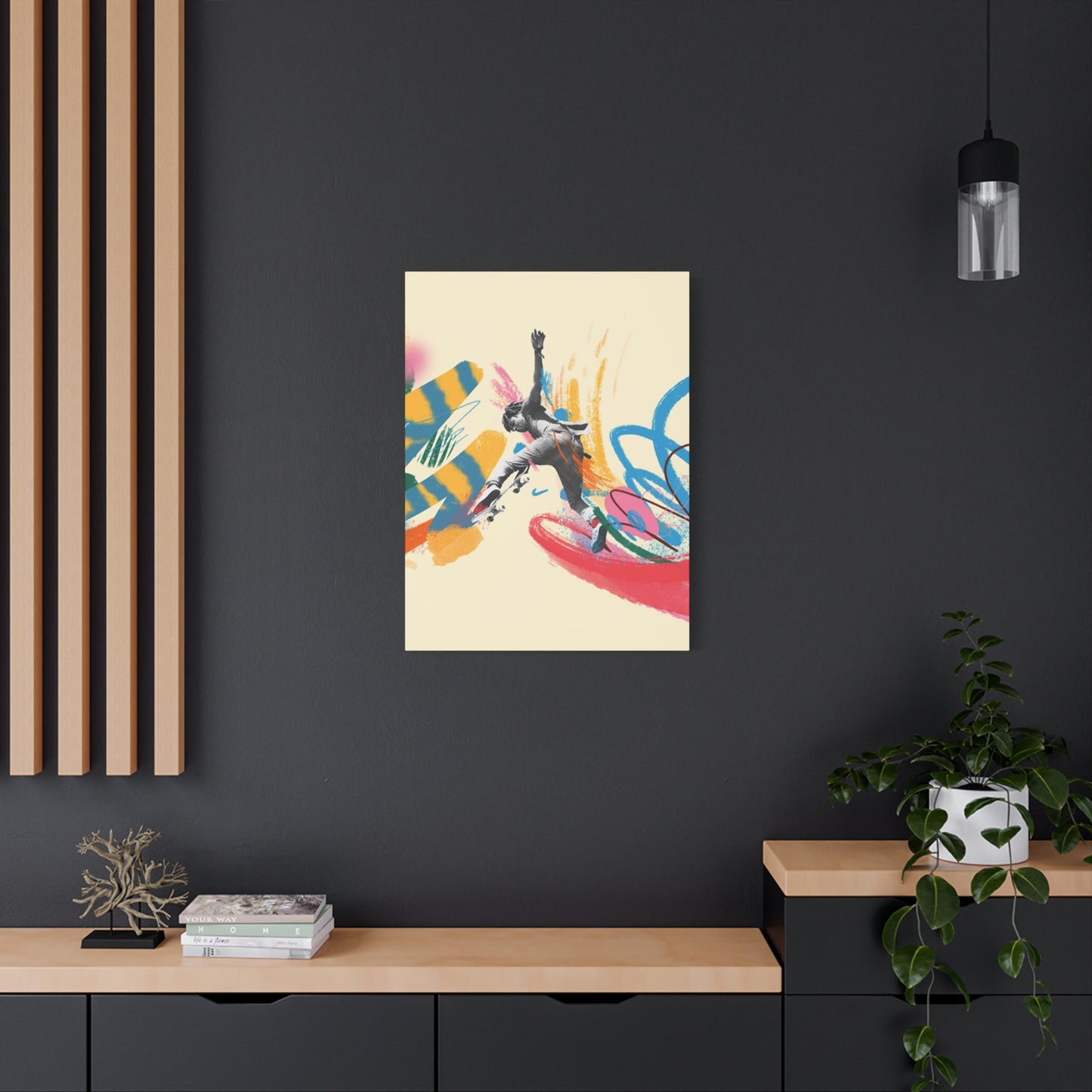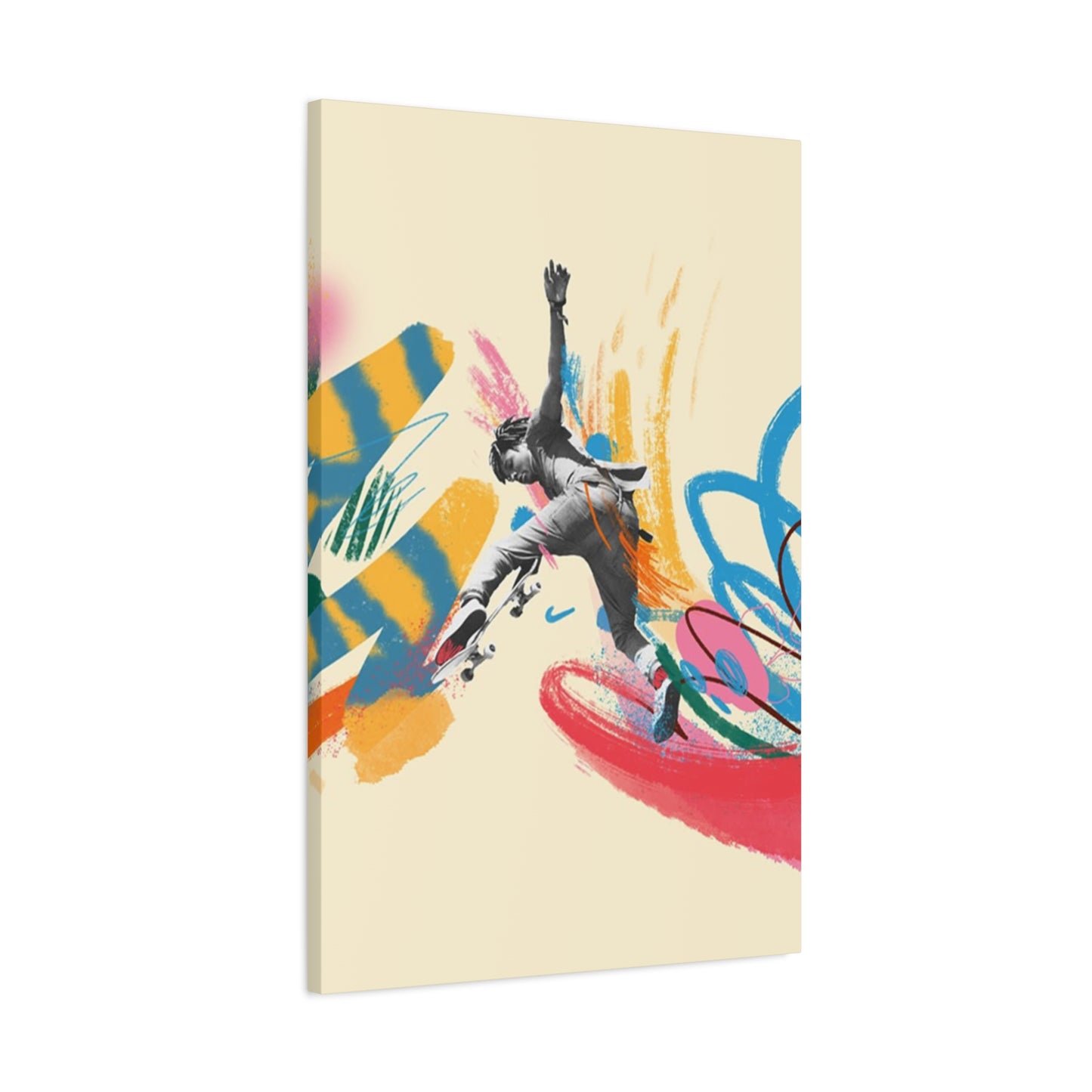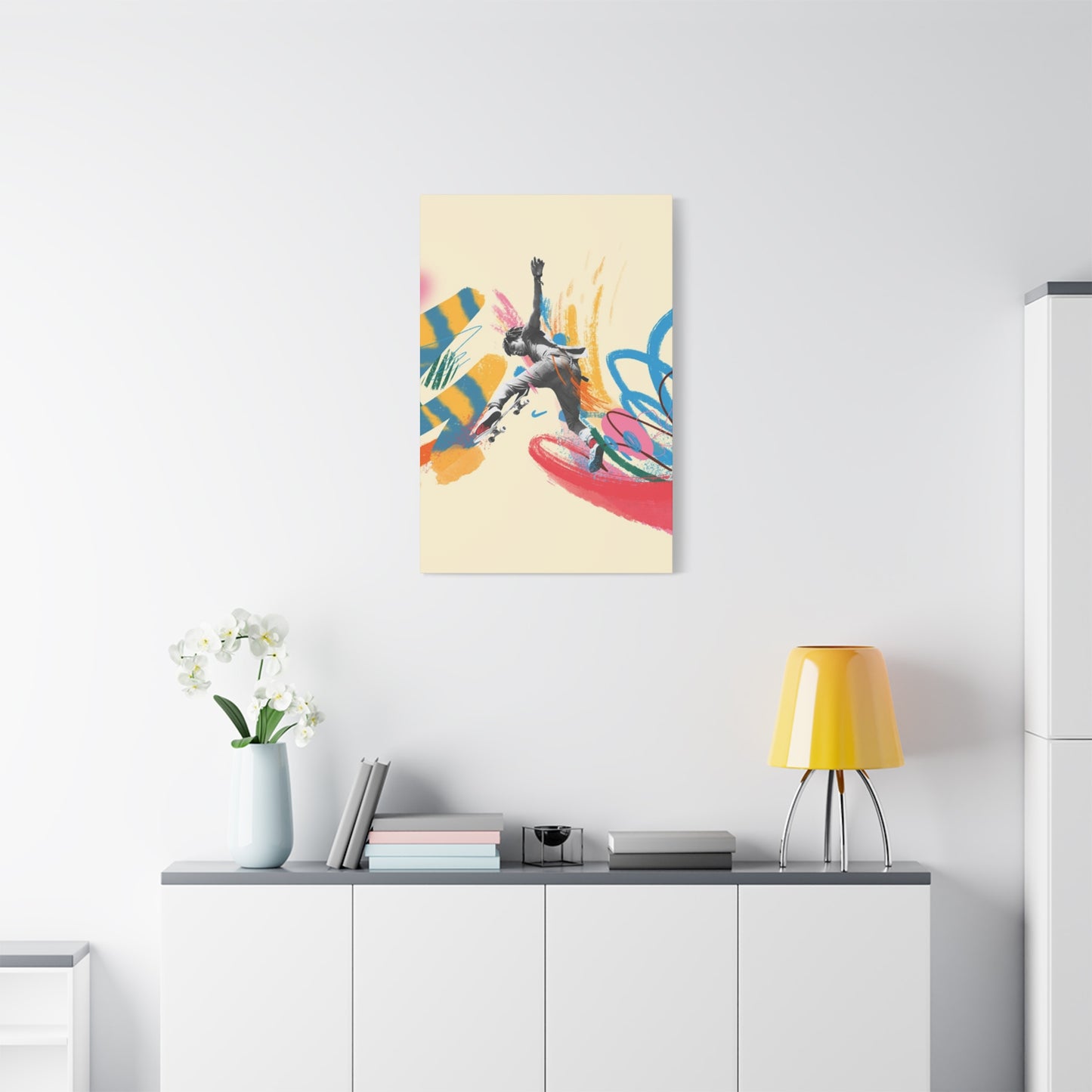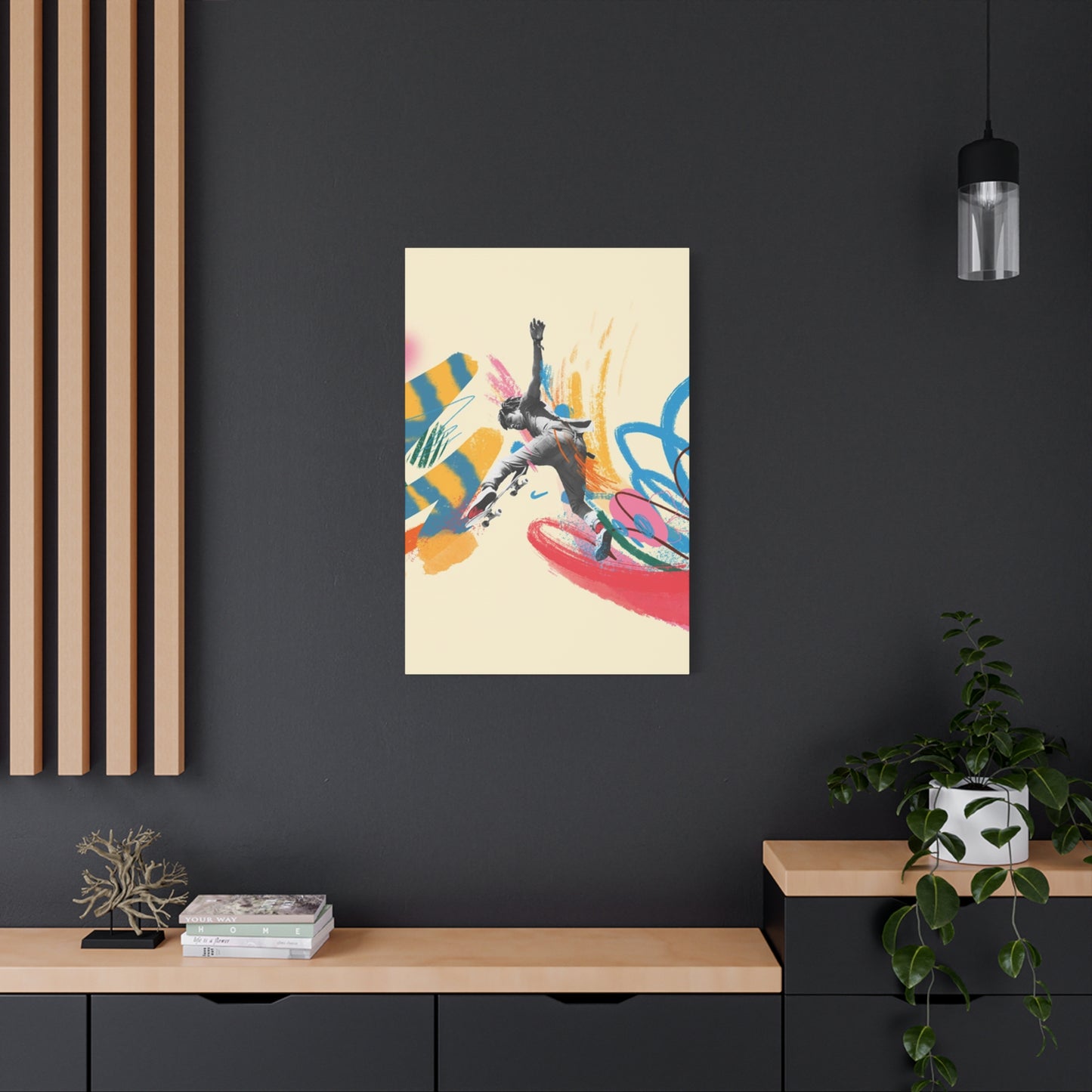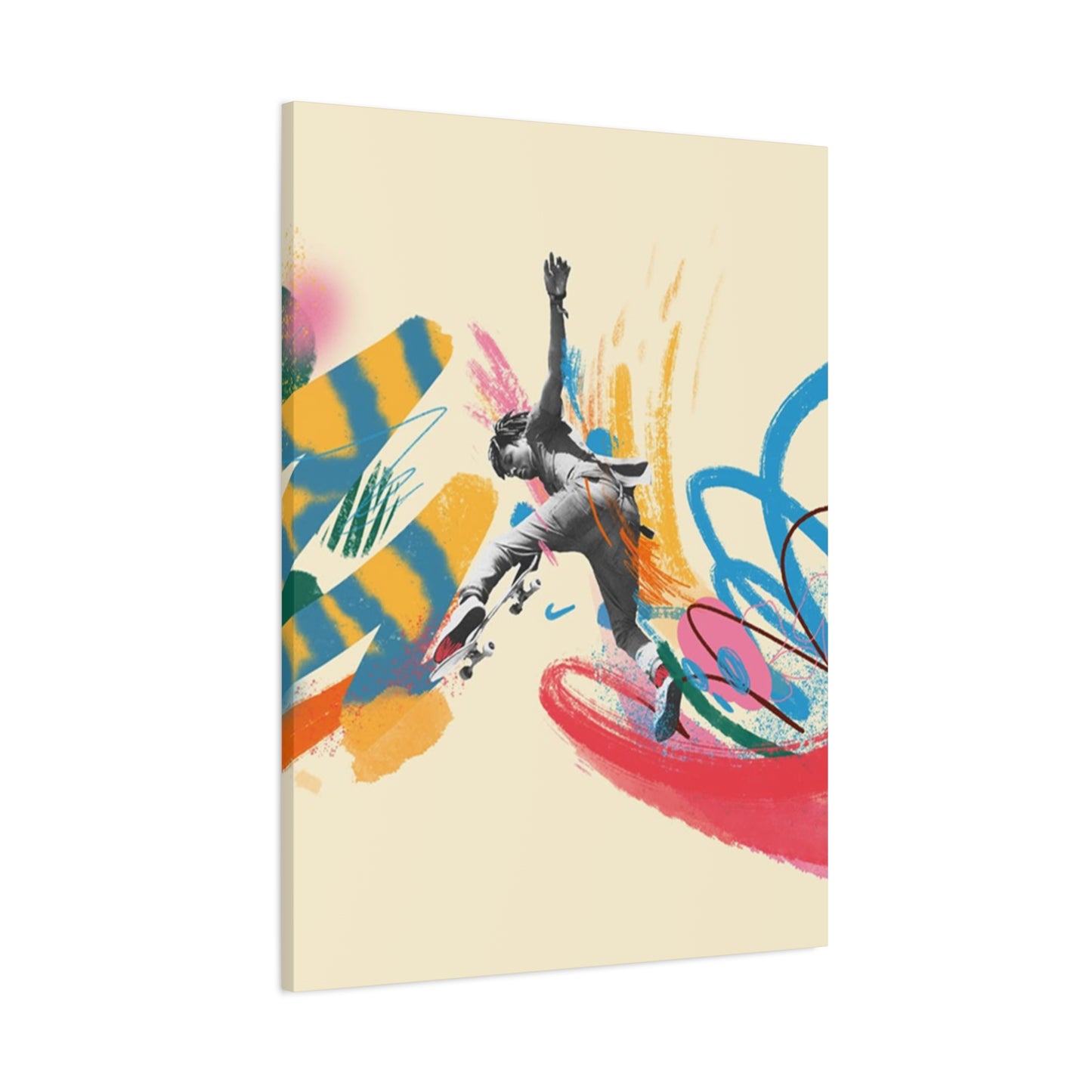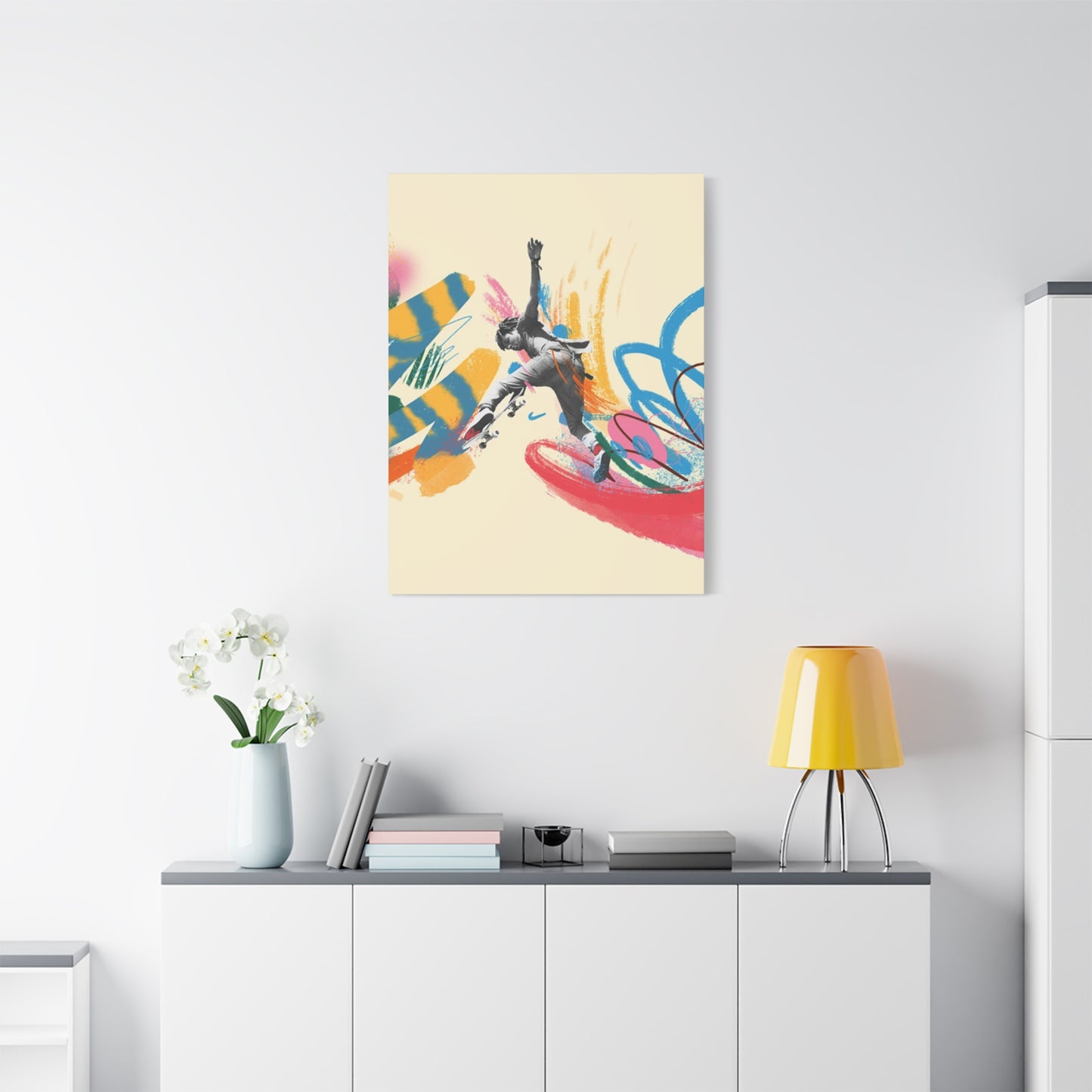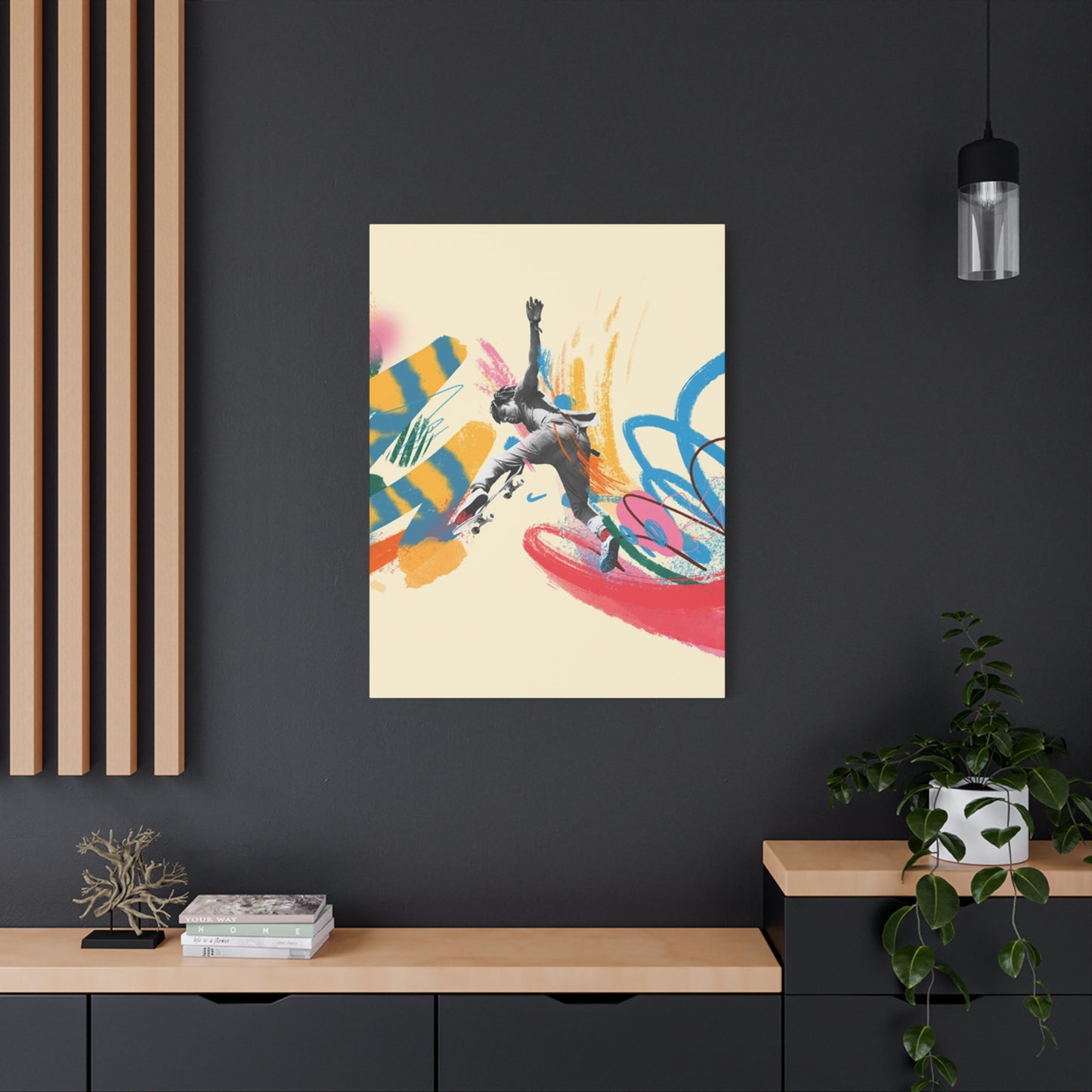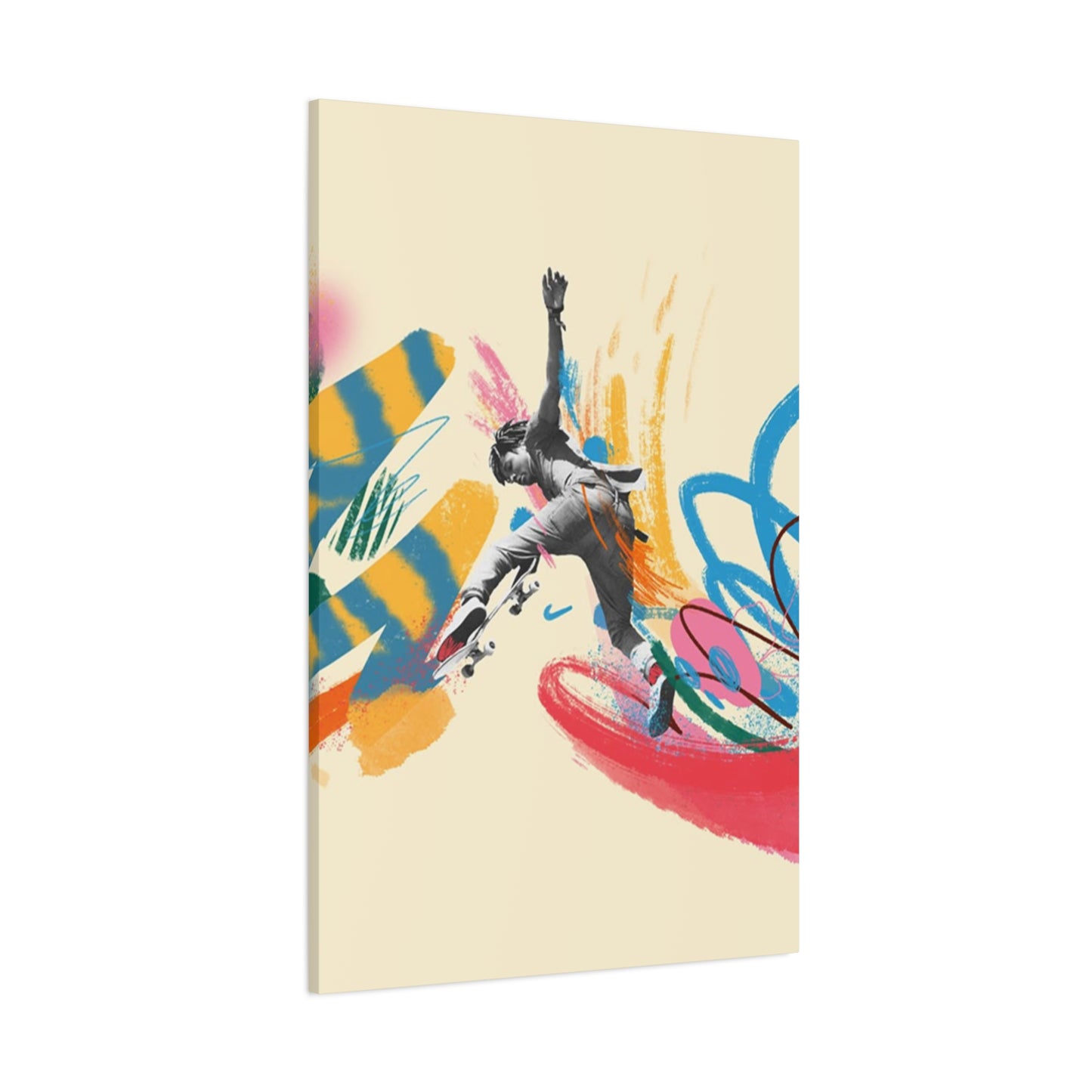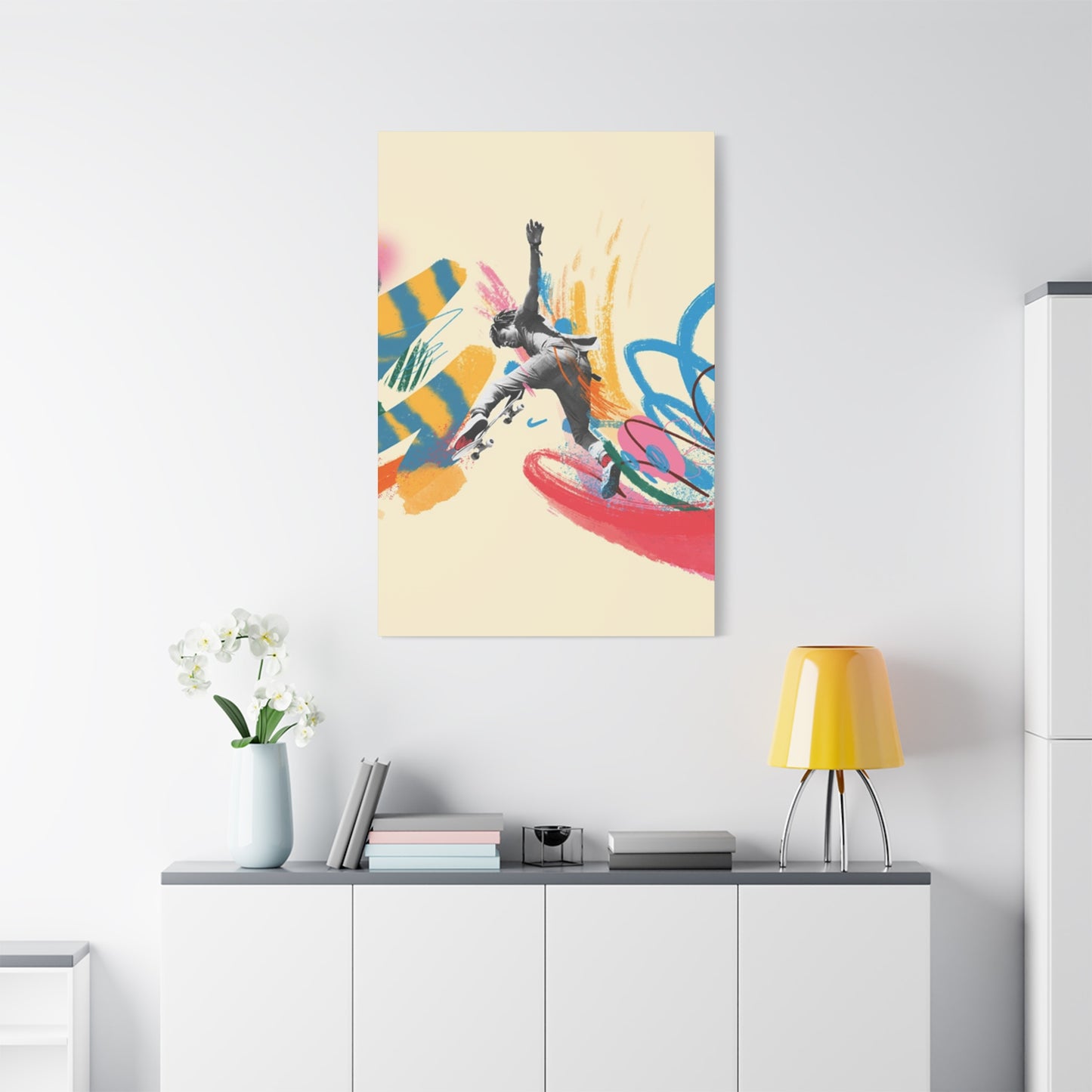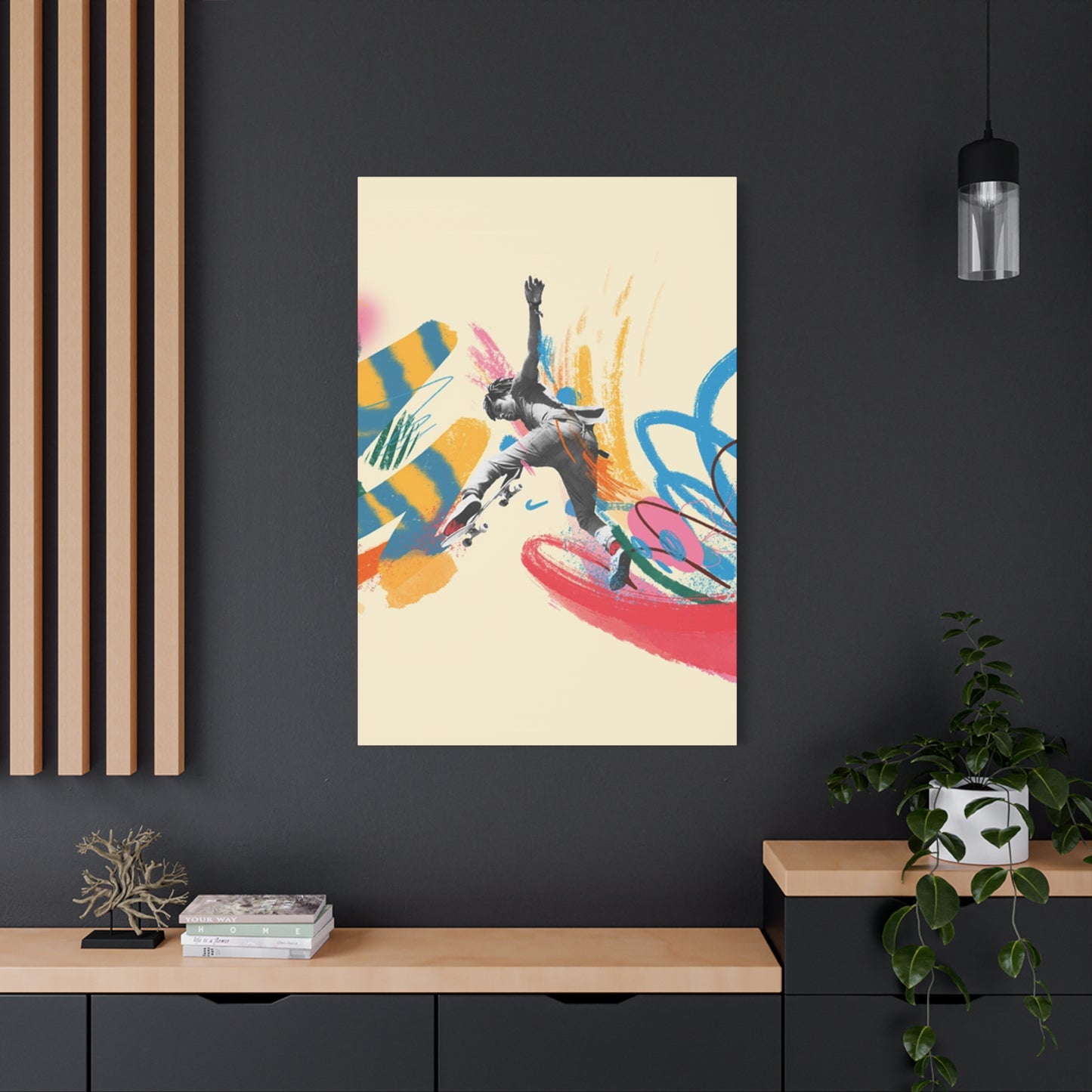Skateboard Poster Wall Art: Bringing Urban Edge to Your Walls
Skateboarding represents more than just a sport or hobby—it embodies an entire lifestyle, attitude, and artistic movement that has influenced global culture for decades. From the gritty streets of California to urban landscapes worldwide, this rebellious pastime has created its own visual language that continues to captivate enthusiasts and art lovers alike. The graphics, imagery, and aesthetic elements associated with this culture have become highly sought-after pieces for decorating living environments, offering a unique way to express personal identity and appreciation for this dynamic subculture.
Whether you're a dedicated rider, an admirer of the athletic artistry, or simply someone who appreciates bold visual statements, incorporating these themed decorative pieces into your living environment creates an atmosphere that's both edgy and authentic. These artistic representations capture the essence of freedom, creativity, and counterculture that defines the skating community, transforming ordinary rooms into personalized galleries that reflect individual passions and interests.
The world of skateboard-themed decorative pieces encompasses everything from vintage reproductions celebrating legendary riders to contemporary abstract interpretations that push artistic boundaries. This comprehensive guide explores every aspect of selecting, displaying, and caring for these unique artistic pieces, helping you create stunning visual arrangements that celebrate this influential cultural phenomenon.
Iconic Skateboard Posters
The history of skateboarding is filled with memorable moments, legendary athletes, and groundbreaking designs that have become cultural touchstones. Iconic representations from this world capture these defining elements, preserving the heritage and evolution of the culture through powerful imagery. These pieces often feature famous riders performing signature moves, classic deck designs from influential brands, or photographs that document pivotal moments in skating history.
When selecting iconic pieces for your collection, consider representations that showcase the golden eras of the sport. The 1970s brought us the Dogtown and Z-Boys revolution, which transformed skating from a sidewalk pastime into an aggressive, creative form of self-expression. Images from this era often feature raw, documentary-style photography with gritty urban backgrounds and pioneering riders carving through empty pools and concrete landscapes. These pieces carry an authentic, rebellious energy that remains influential decades later.
The 1980s ushered in a new wave of creativity with the explosion of deck graphics and the rise of vert skating. Iconic imagery from this period often includes vibrant, psychedelic artwork, punk-influenced aesthetics, and images of riders performing aerial maneuvers on massive ramps. Companies began commissioning talented artists to create memorable deck graphics that became as famous as the riders themselves, and reproductions of these classic designs make exceptional decorative pieces that celebrate this creative explosion.
Moving into the 1990s and early 2000s, the culture experienced mainstream recognition while maintaining its underground edge. Iconic representations from this era might feature technical street skating, massive stair sets, handrail slides, and the athletes who pushed the boundaries of what was physically possible. These images often capture moments of incredible athleticism frozen in time—a skater suspended mid-kickflip over a gap, grinding down a seemingly impossible rail, or launching out of a halfpipe against a sunset sky.
Contemporary iconic pieces continue to emerge as new generations of riders redefine what's possible on four wheels. Modern photography techniques, drone footage, and artistic interpretations bring fresh perspectives to timeless themes. Limited edition prints from renowned action photographers or collaborations between famous riders and established artists create collectible pieces that may become tomorrow's classics.
The value of iconic representations extends beyond mere decoration. They serve as historical documents, preserving moments that defined the culture and inspired countless individuals to pick up a deck. For longtime enthusiasts, these pieces can evoke powerful nostalgia, reminding them of their own experiences and the videos, magazines, and competitions that shaped their youth. For newer fans, they provide connection to the rich heritage that informs contemporary skating culture.
When sourcing authentic iconic pieces, research the history behind the imagery. Understanding the context—who the riders are, what event is depicted, or what made a particular graphic significant—adds depth to your collection and creates conversation opportunities when guests admire your displays. Many collectors focus on specific eras, riders, or brands, creating cohesive thematic arrangements that tell a visual story about a particular aspect of skating history.
Quality reproduction matters significantly with iconic imagery. Look for officially licensed products when available, as these ensure proper compensation for photographers, artists, and riders while guaranteeing superior print quality. High-resolution printing on quality paper or canvas preserves the details that make these images powerful—the concentration on a rider's face, the texture of concrete, the vibrant colors of classic graphics.
Display iconic pieces prominently where they can be appreciated and spark conversation. These images often work beautifully as focal points in a room, drawing the eye and setting the tone for the entire environment. Consider grouping related iconic images together—a collection showcasing the evolution of deck graphics through decades, or a series featuring different legendary riders from the same era—to create compelling visual narratives that educate while they decorate.
The cultural significance of these iconic representations cannot be overstated. They document a grassroots movement that grew from rebellious teens skating empty pools into a billion-dollar global industry and Olympic sport, all while maintaining its countercultural edge. Displaying these images demonstrates appreciation for this unique cultural journey and the creative individuals who shaped it.
Skateboard Culture on Canvas
Canvas prints offer a distinctive way to celebrate skating culture, elevating the imagery beyond traditional paper prints to create artwork with gallery-quality presence. The texture and depth of canvas add visual richness to skating imagery, whether showcasing action photography, graphic artwork, or abstract interpretations inspired by the culture. These pieces bring sophistication and permanence to themed decorating, transforming passionate interests into legitimate artistic statements.
The canvas medium particularly suits the bold, dynamic nature of skating imagery. Action shots gain additional impact when printed on canvas, with the textured surface enhancing the sense of movement and energy inherent in the photographs. A rider mid-ollie over a street gap or carving through a concrete bowl becomes even more dramatic when presented on stretched canvas with gallery wrapping, where the image continues around the edges for a polished, frameless presentation.
Graphic designs translate exceptionally well to canvas, especially the vibrant deck graphics that have become synonymous with the culture. Classic designs featuring skulls, flames, cartoon characters, and surreal imagery look stunning when reproduced at larger scales on canvas. The fabric surface gives these graphics a substantial, professional appearance that paper prints cannot match, making them suitable for any room rather than relegating them to casual or youth-oriented environments.
Abstract interpretations inspired by skating culture flourish on canvas. Artists who capture the essence of the lifestyle through color, form, and composition rather than literal representation create pieces that appeal to broader audiences while maintaining authentic connections to the culture. These might include abstract representations of motion and speed, geometric patterns inspired by skate park architecture, or mixed-media pieces incorporating deck fragments, grip tape textures, and urban elements.
Canvas prints also offer practical advantages for displaying skating-themed artwork. The durable fabric withstands environmental factors better than paper, making canvas pieces suitable for various locations including bedrooms, game rooms, offices, and even covered outdoor areas. The material resists tears and creases, ensuring your investment maintains its appearance over time with proper care.
Size versatility represents another canvas advantage. While small canvas pieces work beautifully in intimate arrangements or gallery walls, the medium really shines at larger scales. Oversized canvas prints create dramatic focal points that command attention and make powerful statements. A six-foot canvas featuring a skater captured mid-trick transforms a plain surface into a striking visual centerpiece that immediately communicates the homeowner's passions and aesthetic preferences.
When selecting canvas pieces, consider the image resolution and printing quality carefully. Canvas printing requires high-resolution source images to maintain clarity and detail, especially at larger sizes. Reputable printing companies use archival-quality inks and professional-grade canvas that resist fading and deterioration, ensuring your artwork retains its vibrancy for years or decades.
The stretching and hanging methods impact the final presentation significantly. Gallery-wrapped canvas, where the image extends around the frame edges, creates a contemporary, polished look that doesn't require additional framing. This approach works particularly well with photographs and graphics that don't have critical details along the borders. Alternatively, museum-wrapped canvas uses neutral borders that continue the edge colors without extending the actual image, creating a cleaner look for pieces where border details matter.
Mounting options for canvas prints vary from traditional hanging hardware to modern floating frames that add depth and dimension to the presentation. Floating frames create a gallery-quality display by suspending the canvas slightly away from the wall, casting shadows that enhance the three-dimensional quality of the piece. This sophisticated presentation method elevates skating imagery into fine art territory, perfect for collectors who want their passion pieces to have maximum visual impact.
Custom canvas printing allows for personalized pieces that hold special meaning. Perhaps you have photographs from your own skating experiences, images of local spots with particular significance, or graphics you've created that reflect your individual artistic vision. Converting these personal images to professional canvas prints creates unique decorative pieces that no one else will have, making your environment truly distinctive.
Collecting canvas pieces offers opportunities to build cohesive series that work together visually. You might gather multiple canvases featuring different tricks performed by the same rider, various perspectives of a single legendary skate spot, or a progression showing the evolution of graphic design styles through different decades. Arranging these related pieces together creates sophisticated wall galleries that demonstrate thoughtful curation rather than random decoration.
The investment value of quality canvas prints should not be overlooked. Well-made pieces using archival materials and professional printing techniques maintain their condition and appearance indefinitely with basic care, making them lasting additions to your environment rather than temporary decorations. Limited edition canvas prints, particularly those signed by photographers or artists, may appreciate in value over time, especially pieces featuring iconic moments or legendary figures.
Canvas presentations also bridge different decorating styles more easily than traditional posters. The sophisticated appearance of properly displayed canvas prints complements modern, industrial, minimalist, and even transitional decorating approaches, allowing skating enthusiasts to incorporate their passion into various aesthetic contexts without creating style conflicts.
Bold Designs in Skateboard Art
The visual culture surrounding skateboarding has always embraced boldness, rebellion, and creative risk-taking. From the earliest deck graphics to contemporary street art influences, the imagery associated with this culture pushes boundaries and challenges conventional aesthetics. Bold designs capture this fearless spirit, featuring intense colors, striking compositions, aggressive imagery, and unapologetic attitudes that reflect the essence of skating itself.
Deck graphics have historically served as the primary canvas for bold artistic expression within the culture. Unlike many commercial art forms, deck designs rarely concern themselves with mainstream appeal or market safety. Instead, they embrace controversial, shocking, humorous, and subversive imagery that speaks directly to the skating community's values and sensibilities. Skulls, flames, demonic figures, and anti-authoritarian messages appear frequently, creating visual statements that cannot be ignored.
The bold aesthetic extends to every aspect of skating's visual culture. Brand logos employ aggressive typography and memorable symbols that communicate attitude and identity instantly. Companies building reputations in this industry understand that subtle, refined branding doesn't resonate with their target audience—riders want imagery that matches the intensity and commitment required to progress in the sport.
Contemporary artists working within the skating realm continue pushing creative boundaries, incorporating influences from street art, graffiti, punk rock, heavy metal, and underground comics. This cross-pollination of counterculture aesthetics creates unique visual language that distinguishes skating-related artwork from more conventional decorative pieces. Bold color palettes featuring neon brights against stark blacks, aggressive line work, distorted perspectives, and surreal compositions characterize many pieces that appeal to skating enthusiasts.
Action photography contributes significantly to the bold design aesthetic. Images capturing riders performing dangerous tricks, launching off massive gaps, or grinding down seemingly impossible obstacles create inherently dramatic compositions. Photographers often emphasize this intensity through composition choices—dramatic angles, close-up perspectives, high contrast processing, and environmental contexts that highlight the risk and skill involved in the captured moments.
Abstract interpretations of skating culture frequently employ bold design elements to convey energy, motion, and attitude without literal representation. Splatter paint techniques, geometric shapes suggesting ramps and obstacles, fragmented compositions echoing the kinetic nature of riding, and explosive color fields all communicate the visceral experience of skating through pure visual impact.
Typography plays a crucial role in bold skating-related designs. Hand-drawn lettering, aggressive fonts, and expressive text treatments appear in many pieces, sometimes as the primary design element. Motivational phrases, skating terminology, location names, and rider nicknames receive graphic treatments that transform words into powerful visual statements. This typographic boldness connects to the culture's roots in DIY zine production, punk rock flyers, and street art where communication happened through maximum visual impact with minimal resources.
The bold design aesthetic serves practical purposes beyond pure aesthetics. In a culture where participants constantly risk injury and push physical limits, aggressive imagery resonates emotionally and psychologically. The artwork reflects and reinforces the mindset required for progression—fearlessness, determination, and willingness to commit fully despite consequences. Displaying bold designs creates environmental reinforcement of these values.
For decorating purposes, bold skating artwork makes powerful statements that define the character of a room immediately. These pieces don't blend into backgrounds or serve as subtle accents—they demand attention and establish the aesthetic tone for entire environments. This quality makes them ideal for creating dedicated skating-themed rooms, youth bedrooms, entertainment areas, or any location where making a strong visual impression takes priority.
Combining multiple bold pieces requires thoughtful consideration to avoid visual chaos. While the individual designs might be aggressive and attention-grabbing, the overall arrangement should maintain some compositional balance. Consider using consistent framing styles, maintaining regular spacing, or organizing pieces around a central theme to create cohesion among bold elements. Alternatively, embrace maximalist aesthetics where dense, layered arrangements of bold imagery create immersive environments that surround viewers with visual intensity.
The cultural authenticity of bold skating designs matters to knowledgeable enthusiasts. Artwork that genuinely emerges from the culture—created by riders, photographers, or artists embedded in the community—carries different weight than generic "extreme sports" imagery produced by outsiders for commercial appeal. Dedicated collectors often research the origins of designs, seeking pieces that represent authentic cultural expression rather than superficial trend exploitation.
Bold designs also offer excellent opportunities for supporting independent artists and small companies within the skating community. Many talented creators produce limited runs of prints, canvas pieces, or original works that showcase their unique perspectives on the culture. Purchasing directly from these artists not only provides distinctive artwork but also supports the creative ecosystem that keeps the culture vibrant and evolving.
Small Skateboard Poster Prints
Small-format prints offer versatile, affordable options for incorporating skating-themed imagery into various decorating scenarios. These compact pieces typically measure between five by seven inches to eleven by seventeen inches, making them perfect for creating gallery walls, filling smaller locations, or building collections without overwhelming available surfaces. The accessibility of small prints allows enthusiasts to explore diverse imagery, experiment with arrangements, and frequently refresh their displays.
The advantages of small-format pieces extend beyond their compact size. Price points for smaller prints generally make them accessible to collectors with limited budgets, enabling fans to build substantial collections over time. This affordability encourages experimentation with different styles, subjects, and artists without significant financial commitment. If a particular piece doesn't work in your chosen location or match your aesthetic as expected, the modest investment makes adjustments painless.
Small prints excel in gallery wall arrangements where multiple pieces combine to create larger visual statements. Mixing various sizes, orientations, and subjects within a unified theme creates dynamic compositions that capture more interest than single large pieces. A gallery wall might incorporate action shots, graphic designs, vintage advertisements, and artistic interpretations all relating to skating culture, creating a comprehensive visual celebration of the lifestyle.
These compact pieces work beautifully in locations where larger artwork would overwhelm the available surface. Narrow hallways, stairwell walls, bathroom accents, closet doors, and areas between windows or architectural features all benefit from appropriately scaled small prints. Rather than leaving these spots bare or struggling to find large pieces that fit awkward dimensions, small prints provide perfect solutions that add personality without spatial conflicts.
Bedroom applications particularly suit small print collections. Young enthusiasts often prefer surrounding themselves with numerous images rather than committing to single large pieces. Small prints allow for personalization, easy changes as interests evolve, and opportunities to display favorite riders, memorable tricks, or inspirational graphics without parental concerns about large, bold imagery dominating family areas.
Office and workspace decorating benefits from small print arrangements. Whether decorating a corner of a bedroom dedicated to homework, a home office, or a creative studio, small skating-themed prints add personality and motivation without appearing unprofessional or distracting. Thoughtfully arranged collections demonstrate passion and individuality while maintaining appropriate atmospheres for focused work.
Collectors appreciate small prints for their ease of storage, rotation, and preservation. Building extensive collections becomes manageable when pieces occupy minimal physical volume. Storage portfolios designed for artwork protection keep small prints safe between displays, allowing collectors to rotate their visible pieces seasonally or whenever they desire aesthetic changes. This flexibility means your collection can grow continuously without creating storage problems.
Framing small prints presents numerous creative opportunities. Matching frames create unified, professional appearances ideal for gallery walls or series presentations. Alternatively, mixing frame styles, colors, and materials adds eclectic charm and visual interest. Mat boards offer additional creative control, allowing you to add borders that complement or contrast with the imagery while standardizing different print sizes to fit uniform frames.
Small print sets or series provide cohesive decorating solutions. Many artists and publishers offer related images grouped by theme—a set showing progressive trick sequences, collections featuring different riders from the same era, or series exploring variations on a particular design motif. These coordinated sets simplify decorating decisions while ensuring visual harmony among multiple pieces.
The gift potential of small prints should not be overlooked. For birthdays, holidays, or congratulatory occasions, skating-themed small prints make thoughtful, personal gifts that demonstrate understanding of recipients' interests. Framed small prints arrive ready for display, making them convenient gifts that require no additional effort from recipients. For budget-conscious gift-givers, the affordability of small prints allows for giving multiple pieces or creating custom sets.
Layering represents an advanced display technique particularly suited to small prints. Leaning multiple framed pieces against each other on shelves, mantels, or furniture tops creates casual, curated looks that appear effortlessly stylish. This approach allows for easy rearrangement, adding new pieces, or removing items without wall damage, perfect for renters or anyone who enjoys frequently refreshing their aesthetic.
Small prints also serve as testing grounds for decorating concepts before committing to larger investments. Uncertain whether a particular color palette, subject matter, or artistic style will work in your environment? Small prints allow you to experiment with minimal risk. If the test piece succeeds, you can confidently invest in larger formats knowing the choice works for your situation.
Creating themed groupings with small prints enables focused collecting around specific interests. You might gather only images from a particular decade, prints featuring a specific rider, graphics from one influential company, or photographs from a legendary skate spot. These focused collections develop depth and expertise, transforming casual displays into curatorial statements that demonstrate knowledge and dedication.
The portability of small prints makes them ideal for temporary living situations. Students in dormitories, young adults in rental situations, or anyone facing frequent relocations benefit from decorative elements that travel easily and install without permanent mounting solutions. Command strips, putty adhesives, or clip systems allow small print displays that leave no marks and adapt to changing circumstances.
Large Skateboard Wall Art Ideas
Oversized artwork creates dramatic visual impact that transforms environments and makes powerful statements about identity and interests. Large-format skating-themed pieces—typically measuring three feet or larger in any dimension—command attention, establish room character, and provide focal points around which entire decorating schemes develop. These substantial pieces suit environments where making bold impressions takes priority and adequate surface area allows for impressive presentations.
Single statement pieces represent the most straightforward approach to large-format displays. A massive canvas or framed print featuring an iconic action shot, legendary rider, or memorable graphic becomes the undisputed centerpiece of a room. This approach works particularly well above seating areas, beds, entertainment centers, or in large expanses that would otherwise feel empty. The key to successful statement pieces lies in selecting imagery that genuinely resonates personally while possessing sufficient visual interest to sustain repeated viewing.
Multi-panel installations offer sophisticated alternatives to single large pieces. Diptychs, triptychs, or larger segmented arrangements divide large images across multiple canvases or frames, creating contemporary, gallery-quality presentations. This approach works brilliantly with panoramic action shots showing sequences of tricks, wide-angle skate park views, or abstract compositions designed for division across panels. The gaps between panels add visual rhythm and architectural interest while the overall composition maintains cohesion.
Oversized photographic murals bring immersive qualities to environments dedicated to skating culture. Entire walls covered with single images—a massive halfpipe view, a street skating scene, or a close-up detail of equipment—transform rooms into experiential environments rather than merely decorated areas. Modern printing technologies make custom murals increasingly accessible, allowing for personalized installations featuring personally significant images or locations.
Large-scale graphic reproductions celebrate the visual art that defines skating aesthetics. Classic deck designs blown up to wall-filling proportions showcase the artistry often overlooked at actual deck scale. These substantial graphic pieces work beautifully in modern, minimalist environments where bold colors and strong compositions provide necessary visual interest against otherwise neutral backgrounds.
Mixing scales within displays creates visual hierarchy and compositional sophistication. Anchor an arrangement with one large piece, then surround it with smaller complementary images that support the central theme without competing for attention. This layered approach builds visual complexity while maintaining clear focal points, guiding viewers' eyes through intentional viewing sequences.
Vertical large pieces suit specific architectural situations particularly well. In rooms with high ceilings, tall narrow spaces, or alongside staircases, vertically oriented large-format pieces fill challenging dimensions that horizontal pieces cannot address. Action shots showing riders launching upward or tall vertical compositions naturally suit these applications.
Architectural considerations significantly impact large artwork success. Assess your available surfaces carefully, measuring not just dimensions but also considering viewing distances, lighting conditions, and surrounding elements. Large pieces require adequate viewing distance for appreciation—placing massive artwork in small rooms where viewers cannot step back sufficiently diminishes impact. Conversely, appropriately scaled large pieces in spacious environments deliver maximum visual power.
Lighting enhances large artwork dramatically. Track lighting, picture lights, or strategic positioning near windows ensures proper illumination that reveals detail and creates gallery-quality presentation. Large pieces often contain intricate details or subtle tonal variations that remain hidden without adequate lighting, so plan illumination as part of your overall installation strategy.
Large-format pieces justify significant investment in quality. At substantial sizes, printing quality, paper or canvas grade, and proper mounting become increasingly critical. Inferior materials or poor printing become glaringly obvious at large scales, while professional quality creates stunning results that justify the expense. When investing in large pieces, prioritize quality over quantity, selecting fewer pieces of superior craftsmanship rather than compromising standards to acquire more items.
Custom large-format pieces offer ultimate personalization. Many printing services create custom oversized pieces from personal photographs or chosen images, allowing you to feature your own skating experiences, local spots with personal significance, or specific moments captured in your photography. These unique pieces hold sentimental value no commercial product can match while creating conversation pieces that tell your individual story.
The architectural integration potential of large pieces distinguishes them from smaller decorative elements. Rather than merely adding decorations to existing rooms, substantial artwork becomes architectural features that define and characterize the environment. This quality makes large pieces particularly effective in open-concept living areas, where they help define functional zones and create visual interest across expansive surfaces.
Large-format abstract pieces inspired by skating culture offer versatility for collectors concerned about literal imagery overwhelming formal environments. Abstract interpretations capturing motion, energy, color palettes, or geometric patterns associated with the culture provide authentic connections to skating while maintaining aesthetic sophistication appropriate for any setting. These pieces allow enthusiasts to express their passion in professionally decorated homes without aesthetic compromises.
Installation techniques for large artwork require careful planning and often professional assistance. Heavy pieces need proper anchoring to studs or substantial wall construction, not merely drywall. Consider consulting professional installers for particularly large or heavy pieces to ensure secure mounting that protects both artwork and walls while achieving level, professional-looking results.
Caring for Skateboard Canvas Prints
Proper maintenance ensures skating-themed canvas artwork maintains its appearance and condition for decades, protecting your investment while preserving the visual impact that made the pieces appealing initially. Canvas prints require different care approaches than paper prints or framed photographs, but the basic principles remain straightforward and manageable for any collector willing to invest minimal effort in preservation.
Dust represents the primary ongoing concern for canvas artwork. Accumulated dust dulls colors, obscures details, and creates dingy appearances that diminish visual impact. Regular dusting—monthly for most environments, more frequently in dusty conditions—prevents accumulation that becomes increasingly difficult to remove. Use soft, lint-free cloths or specialized dusting brushes designed for artwork, applying gentle strokes in the direction of the canvas weave to lift dust without grinding it into the fabric.
For canvas pieces behind glass or in floating frames, standard glass-cleaning techniques apply to the protective surfaces. Spray glass cleaner onto your cloth rather than directly onto the glass to prevent liquid seepage that might damage canvas or stretcher bars. Microfiber cloths clean effectively while leaving no lint or streaks. For unframed canvas pieces with no protective glass, never apply liquid cleaners directly to the canvas surface.
Stubborn dirt or stains on unprotected canvas require gentle intervention. Begin with dry methods—soft brushes or clean erasers specifically designed for artwork cleaning can lift some soiling without introducing moisture. If dry methods prove insufficient, lightly dampen a cloth with distilled water only, gently blotting rather than rubbing problem areas. Never use soap, household cleaners, or solvents on canvas, as these can damage the fabric, dissolve inks, or leave residues that attract future dirt.
Environmental control significantly impacts canvas longevity. Avoid hanging canvas pieces in locations subject to extreme temperature fluctuations, high humidity, or direct moisture exposure. Bathrooms, kitchens, outdoor areas, and locations near heating or cooling vents all pose risks. While canvas tolerates reasonable environmental variation better than paper, consistent conditions preserve materials and inks more effectively over decades.
Sunlight presents particular challenges for canvas artwork. Direct sun exposure fades inks and degrades canvas fibers, causing irreversible damage that diminishes value and appearance. Position canvas pieces away from windows receiving direct sun, or use window treatments to filter harmful UV rays. If you must display pieces in sunny locations, consider UV-protective glass or acrylic glazing for framed pieces, or UV-filtering window films that protect your entire room.
Proper hanging techniques prevent physical damage. Ensure mounting hardware is appropriate for canvas weight—heavy pieces require anchoring to wall studs, not merely drywall. Use hardware specifically designed for canvas hanging, typically consisting of wire or D-rings attached to the stretcher bars. Check mounting security periodically, tightening any loosened hardware before it allows canvas shifting that might cause falls or frame damage.
Canvas prints stretched over wooden stretcher bars may develop looseness over time as fabric relaxes or environmental conditions cause expansion and contraction. Many stretched canvases include key slots on the stretcher bar corners where small wooden wedges can be tapped gently to expand the frame slightly, restoring proper canvas tension. If you notice sagging or waviness developing, this simple adjustment often resolves the issue without professional intervention.
Transportation and storage require particular care with canvas pieces. Never fold, roll, or compress stretched canvas. If you must store pieces temporarily, keep them upright in climate-controlled environments, ideally with protective covering that allows air circulation while preventing dust accumulation and physical contact. For long-term storage, consider professional archival storage solutions that maintain appropriate environmental conditions.
Professional cleaning becomes necessary when DIY methods prove insufficient for addressing accumulated soiling or when valuable pieces require restoration. Art conservators specializing in canvas works can perform deep cleaning, repair damage, re-stretch loosened canvas, and address other issues that exceed casual maintenance capabilities. While professional services involve costs, they preserve valuable pieces when amateur interventions might cause irreversible damage.
Preventive measures often provide the most effective care strategy. Consider applying museum-quality UV-protective sprays or coatings designed for canvas artwork if displaying pieces in challenging light conditions. Install proper lighting that illuminates your artwork without directing heat onto canvas surfaces. Maintain moderate, stable environmental conditions throughout your home. These preventive approaches minimize future problems while maximizing artwork longevity.
Insurance documentation protects significant collections financially. Photograph each piece, retain purchase receipts, maintain condition records, and document provenance information, particularly for limited edition or signed works. Include valuable pieces in homeowner's or renter's insurance policies through riders or specialized collectors' insurance that provides appropriate coverage for art collections.
Handling canvas artwork requires awareness of vulnerable components. When moving pieces, grasp stretcher bars rather than canvas surfaces. Keep hands clean to avoid transferring oils that attract dirt. Never lean objects against canvas surfaces, which creates pressure points that can damage or permanently deform the fabric. Transport pieces individually with protective wrapping that prevents surface contact between multiple pieces.
Regular inspection catches developing problems early when intervention remains simple. Check canvas tension, examine inks for fading, look for signs of moisture damage or pest activity, and verify mounting hardware security. Early detection of issues allows for correction before small problems become major restoration projects requiring professional intervention and significant expense.
Framing Skateboard Poster Art
Proper framing elevates skating-themed artwork from casual decorations to gallery-quality presentations while providing essential protection that preserves prints for generations. The framing choices you make significantly impact both the visual appeal and longevity of your pieces, making frame selection an important consideration for any serious collector or enthusiast creating lasting displays.
Frame style selection begins with understanding your artwork and decorating context. Traditional wood frames in black, white, or natural finishes provide classic versatility that complements most skating imagery while suiting various decorating styles. For vintage or classic skating prints, consider wood tones that echo the era—warm browns and honey tones for 1970s imagery, bolder blacks for 1980s graphics, or clean whites for contemporary minimalist presentations.
Metal frames offer contemporary alternatives particularly suited to modern, industrial, or minimalist environments. Brushed aluminum, matte black metal, or even colored metallic frames create sleek, professional appearances that don't compete with bold skating imagery. The narrow profiles typical of metal frames maximize visible print area while maintaining structural integrity, ideal for larger prints where thick frame moldings might overwhelm compositions.
The decision between glass and acrylic glazing impacts both appearance and protection. Traditional glass provides superior clarity and scratch resistance while costing less than acrylic alternatives. However, glass adds significant weight, creates safety concerns with large frames, and offers no UV protection unless you specifically select UV-filtering glass. Acrylic glazing weighs considerably less, resists breakage, and typically includes UV filtering as standard, but scratches more easily and may develop static that attracts dust.
UV-protective glazing deserves serious consideration for valuable prints or pieces displayed in bright rooms. Ultraviolet radiation causes irreversible fading and degradation, destroying colors and paper fibers over time. Museum-quality glazing blocks up to ninety-nine percent of UV rays, dramatically extending print life while maintaining optical clarity. Though more expensive than standard glazing, UV protection represents wise investment for pieces you intend to display long-term.
Mat boards serve multiple functions in professional framing. Aesthetically, mats create visual buffers between artwork and frames, providing breathing room that prevents compositions from feeling cramped. Mats also protect prints by preventing direct contact with glazing, where condensation might cause sticking or damage. From a design perspective, mats offer opportunities to introduce colors that complement or contrast with imagery while standardizing different print sizes within uniform frames.
Mat color selection influences how viewers perceive artwork. White and off-white mats provide classic, gallery-standard presentations that keep focus on artwork without adding visual elements. Black mats create dramatic contrast particularly effective with vibrant skateboard graphics or high-contrast photography. Colored mats can pull accent colors from artwork or introduce complementary hues that enhance overall presentations, though colored mats risk appearing dated as trends evolve.
Multiple mat layers create sophisticated presentations with added depth. A wider bottom mat in one color topped by a narrower top mat in a contrasting shade adds professional polish particularly appropriate for valuable or significant pieces. This technique also proves useful when standardizing various print sizes within a cohesive gallery wall where uniform outer dimensions create visual consistency.
Backing boards and mounting methods impact long-term preservation significantly. Acid-free backing boards prevent chemical migration that yellows paper and causes deterioration. For valuable prints, consider mounting techniques that avoid permanent adhesion—corner mounts, slip-in mats, or archival-quality removable adhesives preserve the ability to remove prints from frames without damage, maintaining condition and value.
Frame assembly quality varies considerably among providers. Professional frame shops typically offer superior construction with precise joinery, proper backing, and secure mounting hardware compared to mass-produced department store frames. While custom framing costs more initially, superior construction prevents problems like corner separation, backing deterioration, and hanging hardware failure that plague cheaper alternatives.
Do-it-yourself framing provides cost-effective alternatives for budget-conscious collectors willing to invest time and effort. Frame assembly kits, pre-cut mats, and standard-sized frames enable capable individuals to create professional-looking presentations at fractions of custom framing costs. However, DIY approaches require patience, precision, and appropriate tools to achieve results that match professional standards.
Hanging systems impact both security and flexibility. Traditional picture-hanging wire attached to frame backs offers simple, adjustable hanging that works for most applications. D-rings provide more direct mounting particularly suited to heavy frames. French cleat systems create extremely secure hanging while allowing easy removal and repositioning, ideal for collectors who frequently rearrange displays or rotate pieces from storage.
Frame depth becomes critical consideration with thicker artwork or when creating shadow box effects. Standard frames suit typical prints, but thicker skateboard decks, dimensional artwork, or deep mat combinations require deeper frames with sufficient space to accommodate contents without compression or contact with glazing. Verify frame depth specifications before ordering to avoid discovering your chosen frame cannot accommodate your artwork dimensions.
Consistent framing decisions within collections create cohesive visual presentations even when artwork varies significantly. Using identical frame styles, mat dimensions, and glazing across a gallery wall or collection unifies diverse imagery into coherent displays. This consistency demonstrates intentionality and curation rather than random accumulation, elevating the entire presentation.
Custom framing services often provide design consultation that helps clients visualize options before committing to expensive choices. Taking advantage of these services when framing significant pieces ensures satisfaction with final results. Many shops create sample corners showing proposed frame, mat, and glazing combinations, removing guesswork from selection processes.
Skateboard Posters for Bedrooms
Bedrooms provide ideal environments for showcasing skating-themed artwork, offering personal territories where enthusiasts can surround themselves with imagery reflecting their passions without compromise. Unlike shared family areas requiring consensus, bedrooms allow for authentic self-expression through decoration that captures individual identity and interests. For skating enthusiasts of any age, properly selected and displayed bedroom artwork creates inspiring, comfortable environments that celebrate their lifestyle.
Youth bedrooms particularly benefit from skating-themed decorating that validates interests while encouraging personal identity development. Allowing young people to select imagery that resonates with them demonstrates respect for their emerging tastes and preferences, fostering ownership of personal areas. The evolving nature of youth interests makes posters and prints ideal—relatively inexpensive pieces can be replaced or supplemented as tastes mature without significant investment.
Action photography dominates many skating-themed bedroom displays, providing inspiration and motivation through images of incredible athleticism. Seeing favorite riders performing signature tricks, conquering massive obstacles, or achieving competitive success creates visual reminders of what dedication and practice can achieve. For young riders developing skills, these inspirational images serve daily motivation to progress and persevere through the challenging learning process.
Graphic-focused pieces add bold visual interest to bedrooms while celebrating the artistic side of skating culture. Colorful deck graphics, brand logos, and illustrations created by culture-connected artists provide vibrant decoration that enlivens bedroom environments. These pieces often resonate particularly strongly with enthusiasts who appreciate the creative aspects of the culture beyond just the athletic components.
Conclusion
Skateboard Poster Wall Art: Bringing Urban Edge to Your Walls captures the dynamic energy, creativity, and rebellious spirit that skate culture embodies. More than mere decoration, skateboard-themed wall art transforms ordinary spaces into urban-inspired sanctuaries that celebrate individuality, movement, and modern design sensibilities. By integrating these bold posters into your home, office, or studio, you invite a sense of adventure, freedom, and youthful energy, creating a space that resonates with vibrancy and personality.
The appeal of skateboard poster art lies in its ability to merge lifestyle with visual aesthetics. Posters featuring skaters in action, iconic tricks, and urban landscapes evoke a sense of thrill and motion, reflecting the culture’s emphasis on skill, creativity, and self-expression. The urban motifs, often accompanied by graffiti-style typography, bold colors, or high-contrast imagery, make these artworks compelling focal points in any room. They offer a visual narrative that connects viewers to the spirit of street culture, extreme sports, and artistic innovation.
Versatility is a key advantage of skateboard-themed wall art. Large-scale posters can dominate living rooms, creative studios, or recreational spaces, establishing a strong visual statement. Smaller prints, framed or grouped in gallery arrangements, add depth and interest to hallways, bedrooms, or personal offices. The adaptability of these pieces ensures they can complement industrial, minimalist, or contemporary décor styles, while their bold urban aesthetics bring a fresh, edgy vibe to otherwise neutral interiors.
Color and composition play significant roles in maximizing the impact of skateboard wall art. Bright pops of orange, red, and neon hues create energy and excitement, while monochromatic or black-and-white designs emphasize form, motion, and skill. Pairing posters with complementary décor elements—such as metal accents, concrete textures, or wood finishes—reinforces the urban aesthetic and creates a cohesive environment that feels curated, dynamic, and alive.
Lighting enhances the vibrancy and drama of skateboard posters. Natural light brings out subtle colors and details, while accent lighting or directional spotlights can highlight textures, edges, and dynamic compositions. Proper illumination transforms a simple poster into an immersive visual experience, emphasizing motion and energy, and making the room feel more engaging and interactive.
Beyond visual appeal, skateboard wall art carries symbolic and emotional resonance. Skateboarding represents freedom, resilience, creativity, and individuality—values that extend beyond sport into lifestyle and personal expression. Displaying these posters in your space serves as a daily reminder of courage, risk-taking, and the excitement of pushing boundaries. Each glance can inspire creativity, confidence, and a sense of adventure, reinforcing both aesthetic and emotional impact.
Ultimately, Skateboard Poster Wall Art: Bringing Urban Edge to Your Walls demonstrates how thoughtfully curated art can transform interiors into bold, expressive, and culturally rich environments. These pieces go beyond decoration, celebrating movement, urban identity, and artistic flair. By incorporating skateboard poster art into your living space, you create walls that reflect energy, creativity, and modern urban sensibilities.
Skateboard wall art is more than décor—it is an embodiment of lifestyle, culture, and personal expression. It brings energy, individuality, and a contemporary edge into your home, turning ordinary walls into vibrant statements of style, attitude, and creativity.

















